The sky is paling to a rosy apricot. Blink and you can figure out the change in its colors, a shift from an inky-grey to a purple-black. As the sun rises further it changes more, until it pales enough behind the stonework that you can begin to make out the structure of largest religious monument in the world.
4:00am. It was pitch dark in the dorm. After a panic-stricken search for my phone to turn off the alarms, I crawled out of my bottom bunk bed and ran off to the showers. I slipped into my pre-laid out clothes and tiptoed out of the dorm room and waited outside in front of the hostel for my bunkmate, Katie to join and for the tuk-tuk driver Mao to turn up. Katie hurried to the hostel’s entrance assuming Mao already arrived, we waited ten or fifteen minutes before Mao arrived and we clambered onto his tuk-tuk and drove off to pick Alex, who also had booked the same day tour. Mao and the three of us drove off into the night. I wouldn’t call myself an early morning person, but despite the ungodly hour of 4.30am I am wide awake – buzzing with the excitement and anticipation of whats to happen. We were on our way to watch the sunriset— from Angkor Wat.

We stood in a queue until the ticketing counters opened at sharp 5.00am
A twenty-minute drive brought us to Apsara Authority’s ticketing office where we had to queue until 5.00am for the ticketing booths to start issuing the tickets. Each of us paid $37 for a one-day pass, they were also selling 3-day passes for $62 (valid for 10 days from the date of issue) and 7-day passes for $72 (valid for 30 days from the date of issue). We also had to stand straight facing a camera for them to shoot a photo of us which they printed on each of our tickets. We got back in our tuk-tuk and drove four miles before we arrived somewhere around Angkor Wat, surrounded by a wide moat. We crossed it on a floating plastic bridge that was about 200m long and 10m wide. I barely saw the lotus flowers that peacefully rested over the water’s surface. The grass was damp and I was glad I wore my sneakers while I hopped from one stone over to the other. By the time we crossed on to the other side and reached the reflection lake where we would watch the sunrise, the time was 5:20am and we weren’t the only people that ventured in the wee morning hours in search of the mystical sunrise, there were already hundreds of people lined up on the edge of the lake with cameras and tripods setup. The temple was about 200m from where we stood, but we somehow managed to find a more secluded and peaceful spot to take in the sunrise and set up base. Although it was still dark, we could see the reflection of the temple in the water in front of us, and while we waited, we took lots of photos as the light gradually improved.
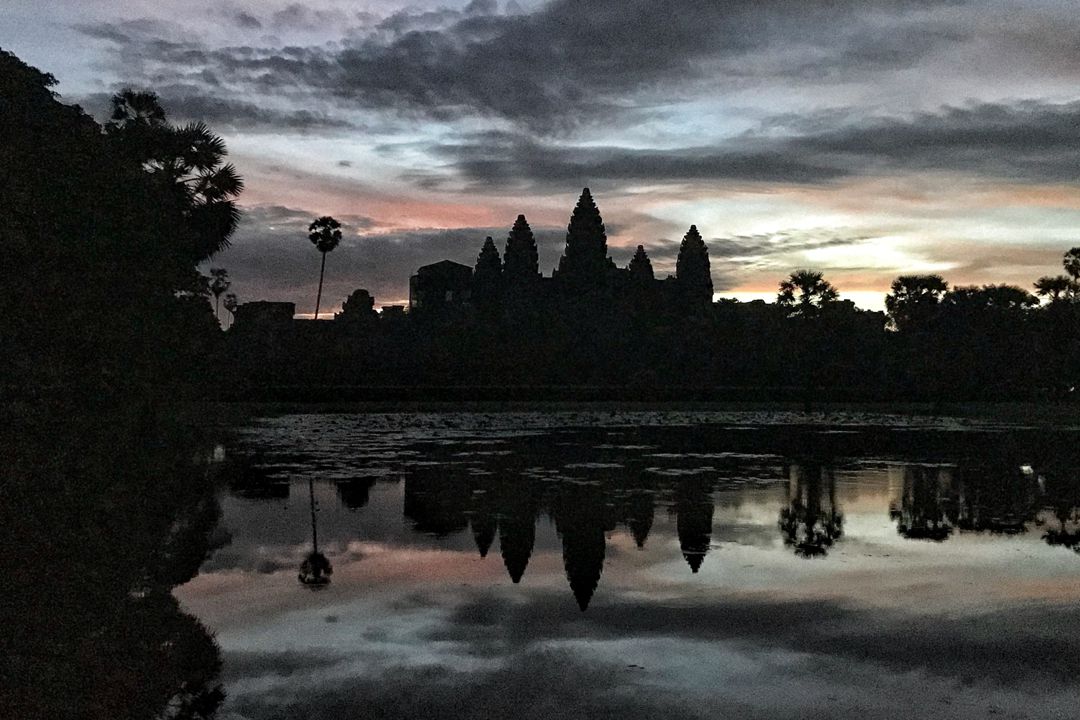
The sky slowly turns into a watercolor of apricot, grey and purples.
I felt a little underwhelmed, especially when the clouds prevented the awe-inspiring sunrise that we read so much in travel websites. Almost half-an-hour after we arrived, the first glimpse of the sun appeared, golden haze stretched behind Angkor Wat and I was truly enamored at the magnificent sight. At this point I realized the small and insignificant relation to the size, age, and beauty of the temple. A quick glance back and we finally saw the sunrise that we all expected, it made a more grand appearance as it outlined the monument’s silhouette. Suspense and euphoria filled the air. We captured dozens of photos until Mao called us to leave for breakfast, we followed him back to the grounds and across the floating bridge to the car-park and on to the tuk-tuk and headed for breakfast to a restaurant packed with tourists. We spent about 30 minutes on breakfast and took off to see the next attraction.
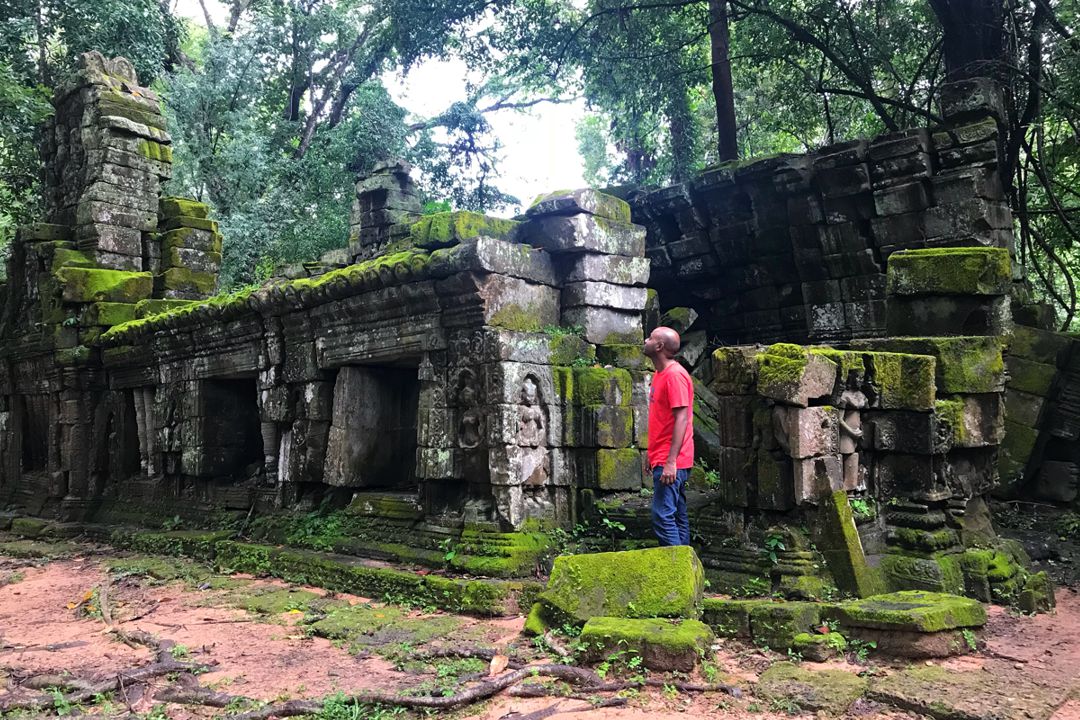
I could stand in awe for hours at this beautiful ruins!
Ta Prohm
Built in 1186 by Jayavarman VII as a Mahayana Buddhist monastery, Ta Prohm is undoubtedly the most reminiscent ruins from all of Angkor’s ancient monuments – its courtyards, maze-like corridors and terraces swallowed by the encroaching jungle, with shrines and pavilions engulfed by the roots of hundred-year-old trees, and jumbled piles of delicately carved stone blocks.
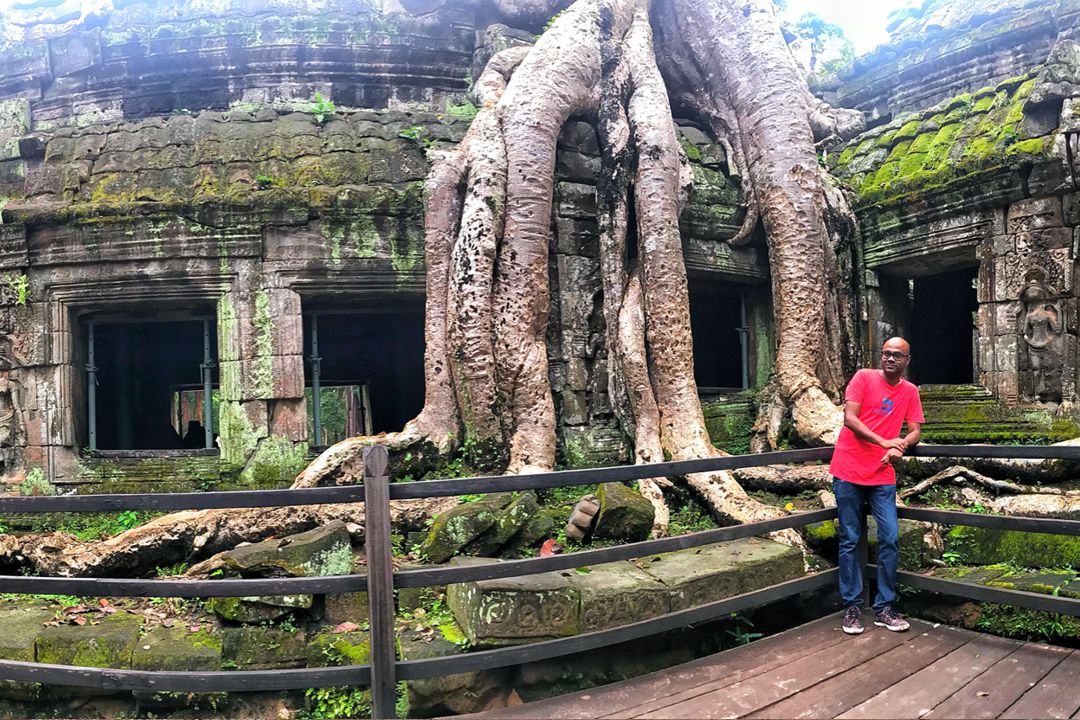
Ta Prohm will easily satisfy every Tomb Raiderish romantic cliché you ever imagined!
In early 20th century, when Angkor was rediscovered, French archaeologists made sure that the giant tree roots snaking around Ta Prohm would not deteriorate in any way that could cause harm for its visitors. Earlier, visitors were allowed to climb onto the damaged galleries, but was prohibited later, to preserve the ruins and for the safety of its visitors. The carefully positioned stones can easily weigh a tonne or more and could cause some serious damage if they fall. At present, Ta Prohm is under restoration by a team of Indian archaeologists working along with the Cambodian government.
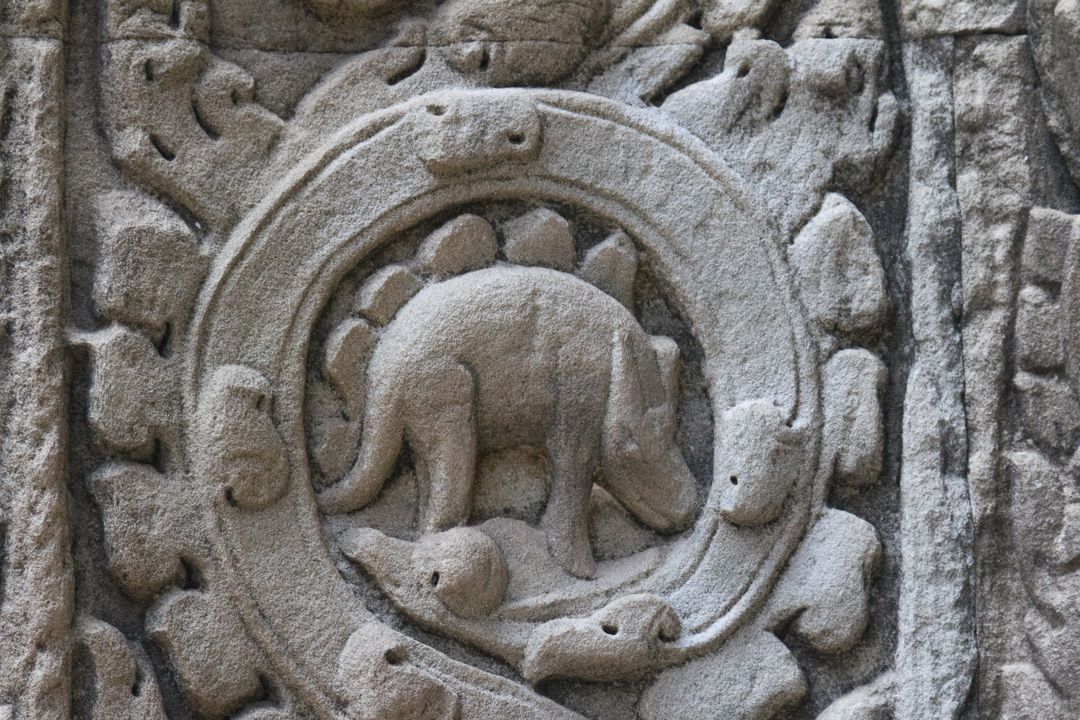
Is this evidence of dinosaurs in human times?
Ta Prohm was also featured in the 2001 Hollywood movie “Tomb Raider”, where actress Angelina Jolie “Lara Croft” plucks a jasmine flower and the ground she was standing collapses and she falls into an underground tomb. The scene was shot at the easternmost gopura (entrance pavilion) of the central enclosure, nicknamed the Crocodile Tree. The temple itself is a truly impressive and accidental blend of human artifice working in harmony with nature. We spent almost two hours admiring Ta Prohm before we moved to our next site.
Ta Nei
An isolated small temple in the midst of the deep Cambodian jungle, built by King Jayavarman VII (r 1181–1219) in the 12th century as a testament to Buddhist principles and beliefs. Visitors to Ta Nei are on a lesser scale since it is not very popular due to its obscurity. The temple also remains in fairly moderate condition, despite the amount of jungle flora sprawling across the temple grounds and pillage because of its remote location. It had hundreds of carvings, including apsaras and lintels with scenes from the ancient Buddhist mythology.
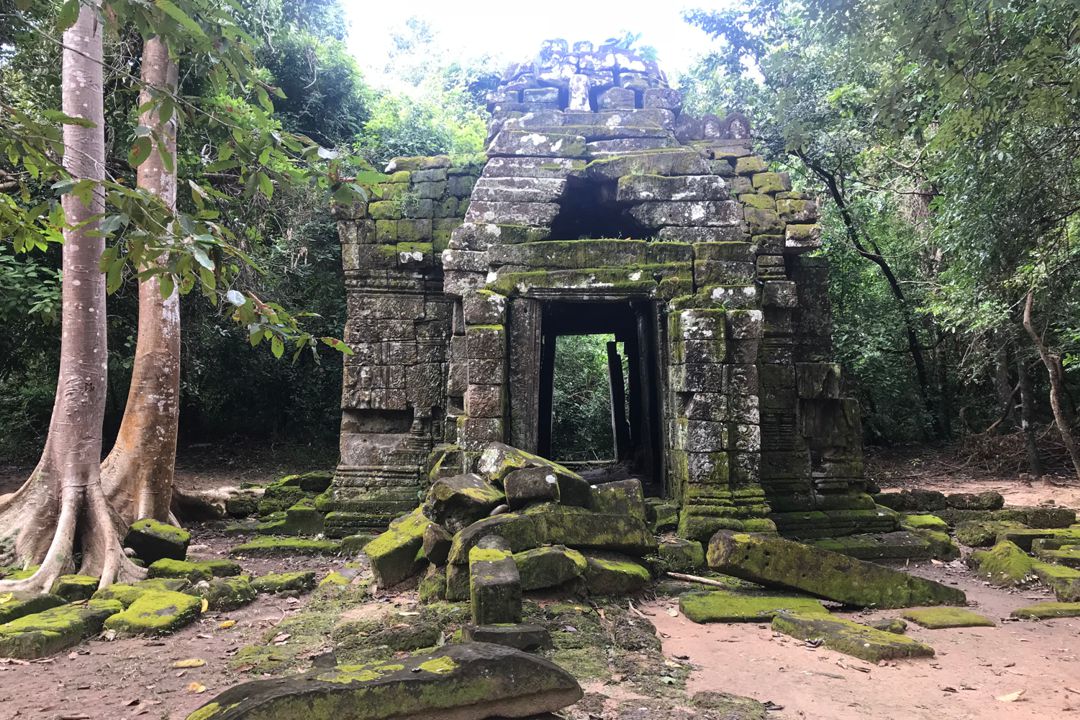
We had the pleasure of having an Angkor temple all by ourselves!
Ta Nei can also be quite rewarding for its visitors with the same charm that affected its early Angkor explorers.
Bayon
Built in the early 13th century as the official temple of the Mahayana Buddhist Kingdom, also referred as the ‘face temple’, it features 216 enigmatic smiling faces of Avalokiteshvara carved into it and holds a combination of mythological and historical relevance in chronological order. At first glance, it may appear as a pile of melting rubble from a distance, but only when you go inside and ascend to the third level, its magic becomes evident. A total of 1.2 kilometers decorated with extraordinary bas-reliefs incorporating over 11,000 figures, the architectural audacity inspires the transition from Hinduism to Mahayana Buddhism.
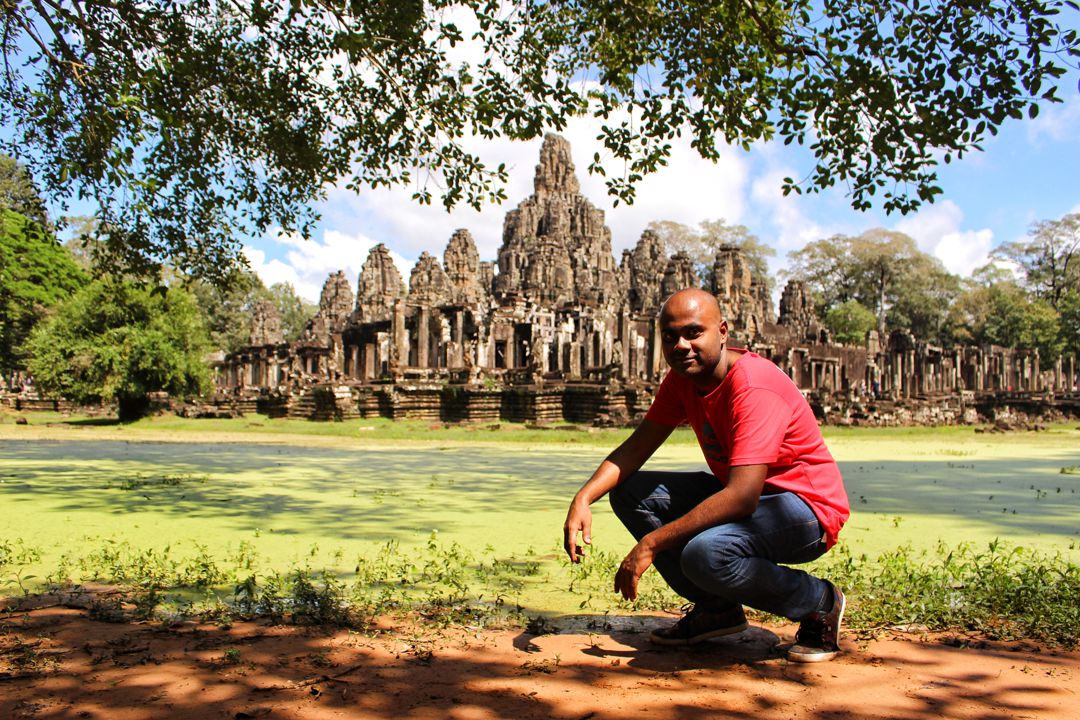
Its iconic visages, the huge heads glare down from every angle, exuding power and control with a hint of humanity.
As we walked around, we saw more and more heads, some full face and some in profile, some were at eye level, and others staring down.
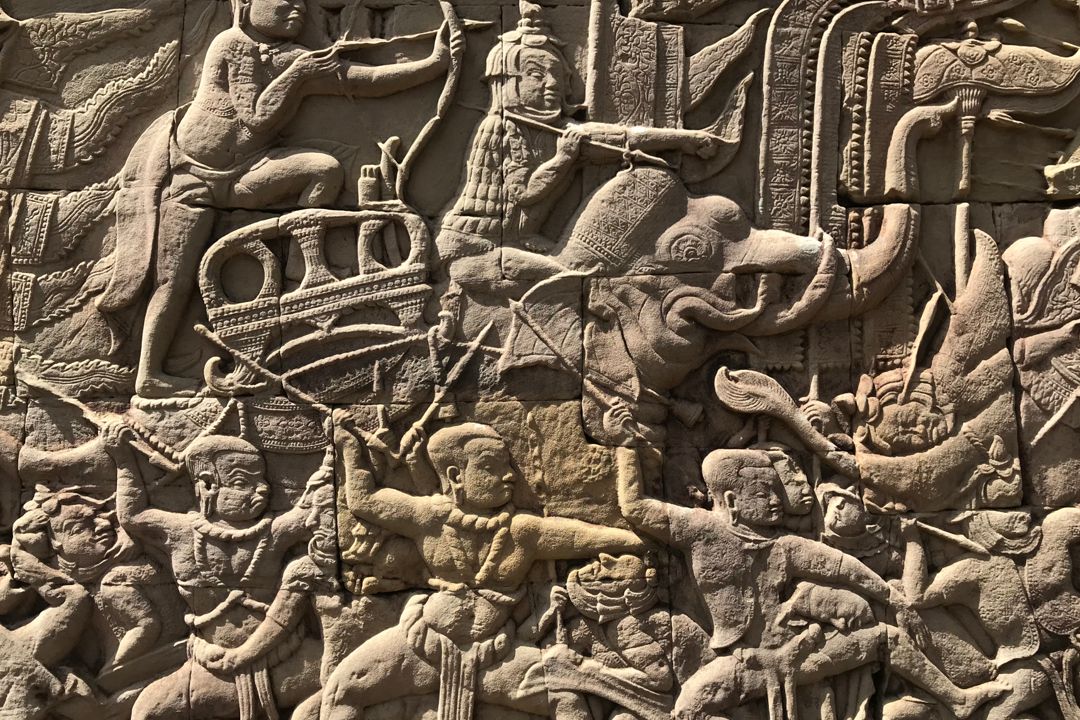
On the first level, we encountered a bas-relief, Chams on the Run.
We noticed that the bas-reliefs on the second level did not have the epic proportions compared to the ones we saw at the first level. It was almost 12:30 p.m. and Mao suggested we should hurry for lunch, we drove to the same restaurant where we had breakfast, we enjoyed a good meal before we proceed to the final attraction of our tour.
Angkor Wat
This is where we began our day and witnessed the sunrise. Cambodia’s premier tourist attraction, with a record-breaking 2.2 million visitors in 2016 to the sacred site. Dominated by a quincunx of towers, the Khmer architectural masterpiece spreads 400 square kilometers and houses hundreds of ancient temples and shrines that have stood the test of time. Angkor Wat is dedicated to Vishnu, the Supreme God of Hinduism. The Angkor empire was home to millions of people and dominated the region 800 years ago but faded away as most civilizations did. The temples were left to ruin, lost and forgotten in the deep jungles. Since its rediscovery, UNESCO has designated Angkor as a World Heritage Site, it also holds several world records. It is the largest religious monument in the world and home to the longest bas-relief in the world.
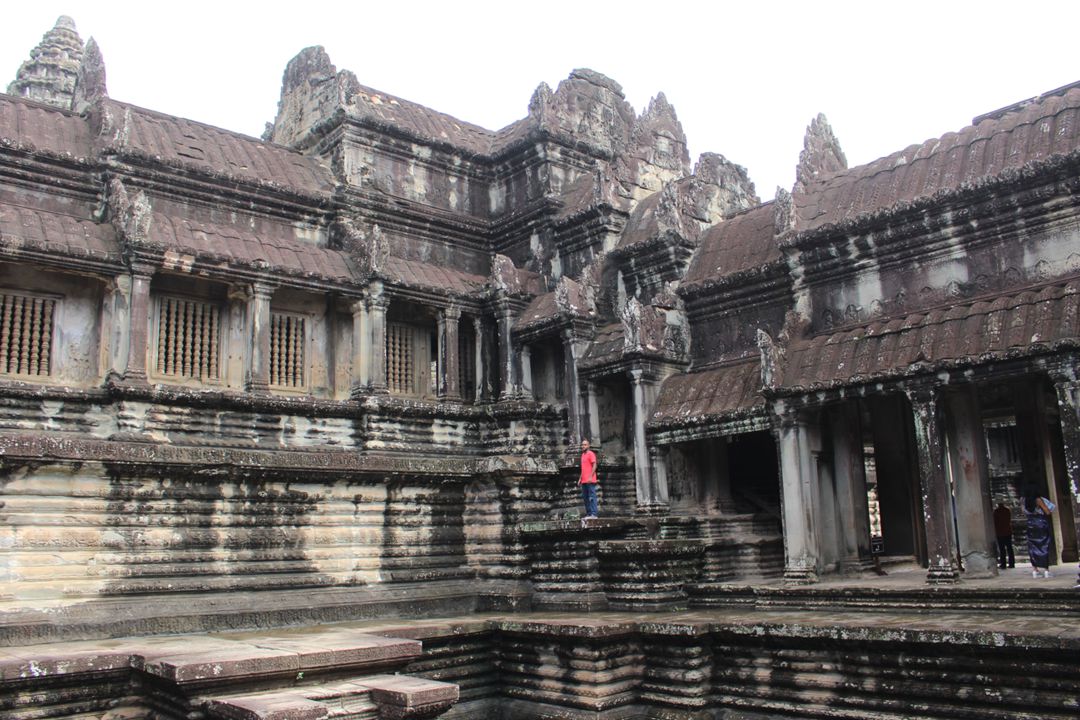
Can you spot me?
Mao escorted us to corridors where inscriptions explained the history of the construction on carvings in the stone walls that depicted people, carts, elephants, etc. The stone walls also had some text in ancient languages. One cannot help but notice the attention to every detail in the carvings. Decorations and images proliferate almost every wall. It is amazing that such a massive construction took place centuries ago and is more amazing to see it still standing. In some areas, we saw restoration work in progress. We also saw a few monks in their saffron robes resting or maybe meditating.
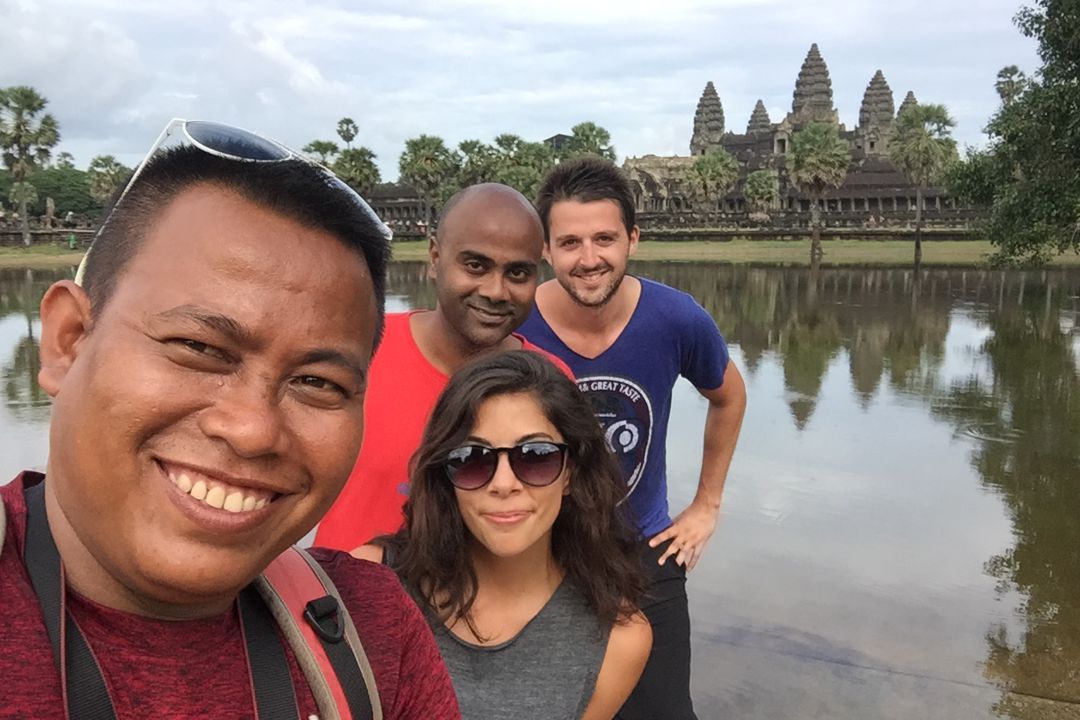
We conquered Angkor Wat!
We spent one and a half hours exploring the temple through the stone halls, stairs, and corridors. I admit that one day is not enough to visit and understand Angkor Wat and its significance, but my visit will forever be engraved in my memories. We couldn’t have done this tour better with anyone else, Mao was our tuk-tuk driver, guide and an amazing photographer. If you are ever visiting Siem Reap, I highly recommend you to do the Angkor Wat tour with Mao, you could reach him on his Facebook page. Don’t forget to check my Instagram for the awesome photos he took for me.


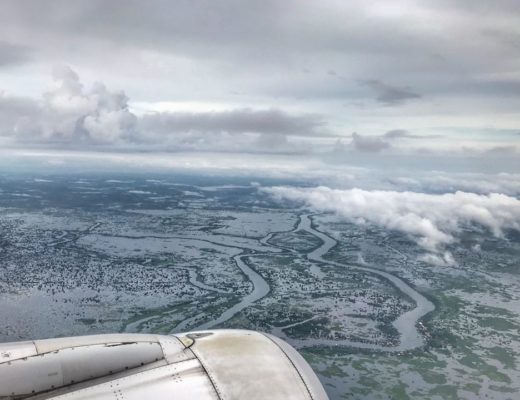
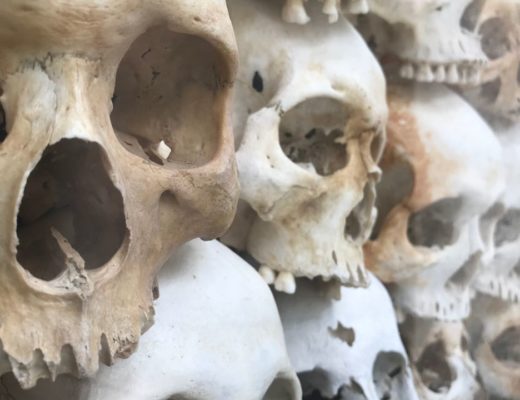

No Comments